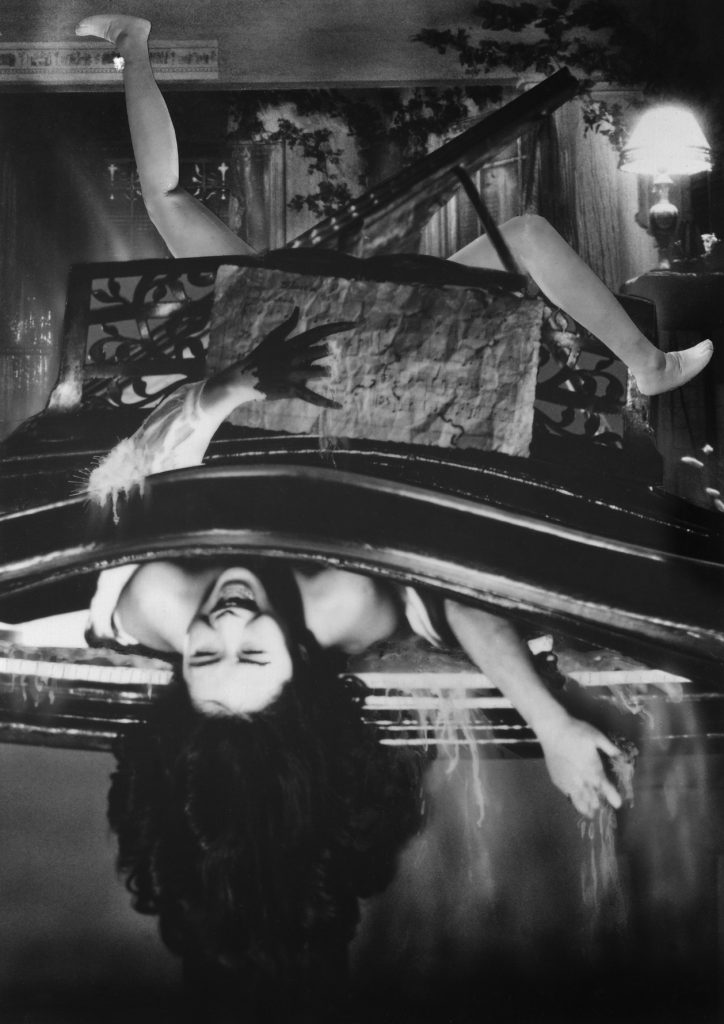Christoph Huber
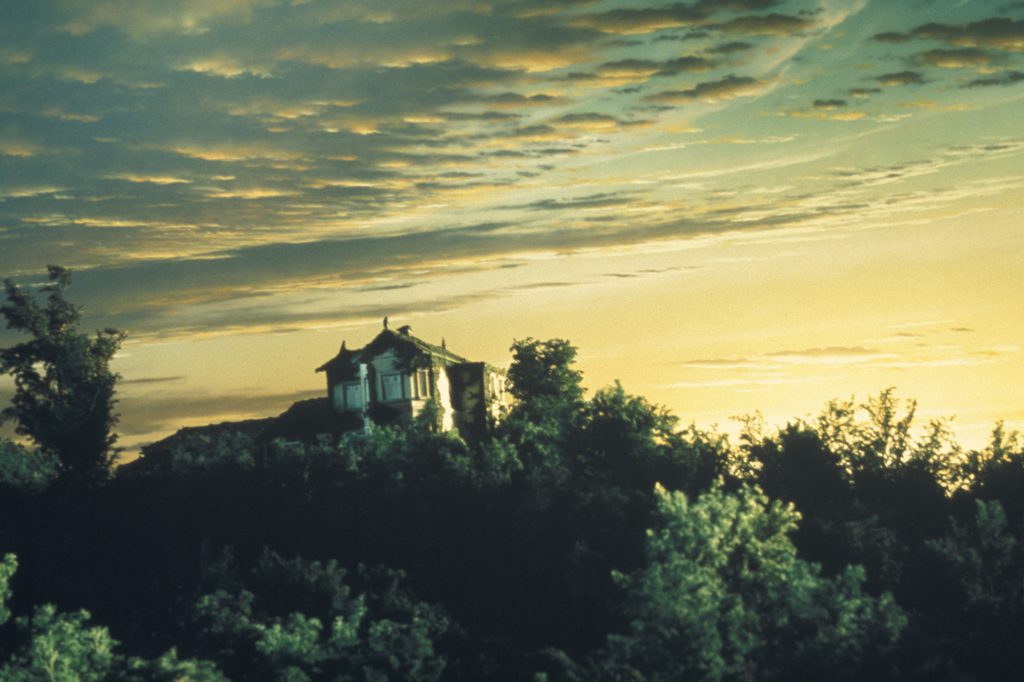
The Japanese film House – usually referred to as Hausu, mostly thanks to the mystery of back-and-forth transliteration even though its writer-director had deliberately chosen a foreign-language title to add a taboo-breaking frisson – has become a major cult item in the West over the course of the last decade after being rescreened at festivals in the late 2000s and subsequently published by such prestigious DVD companies as Criterion and Masters of Cinema. But even as this delirious grab bag of a movie – part satiric comedy, part hallucinatory horror story, part social parable – has become a touchstone not just for connoisseurs of (Asian) genre cinema, the remaining work of its director Ôbayashi Nobuhiko (1938-2020) remains underseen outside of his home country. Which is too bad, since his prolific career is unique (and his work has been hugely influential), and not just because by the point Ôbayashi made House – his debut feature within the context of “normal” studio film production – he had already amassed an amount of experience most filmmakers can only dream of. It may also explain why House is a famous example of the kind of batshit-crazy-mix-and-match-filmmaking praised by fans of the weird: Its foundations rest on decades of experience and experiment – and I won’t even try to make a fool of myself by trying to explain its wacky plot turns or describe its eye-popping visual smorgasboard, although some stills accompanying this text may give you a clue.
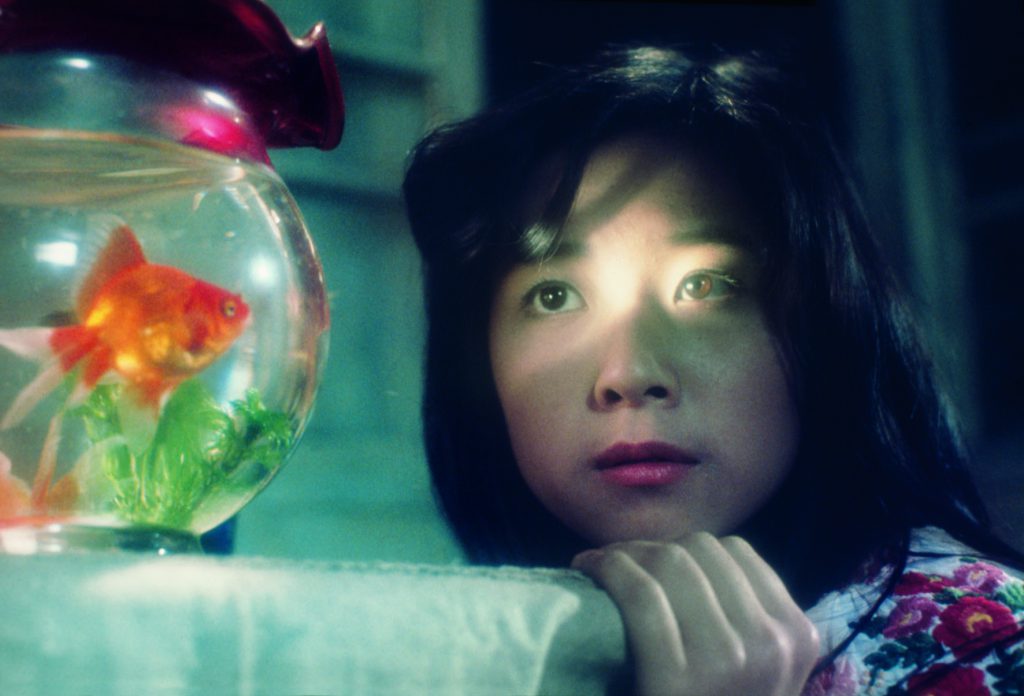
Born in 1938 as the son of a medical doctor, Ôbayashi started working with film at the tender age of seven years (some claim even six!), when he discovered his daddy’s film projector in a warehouse and made his first experiments in editing. A decade later he started to direct with 8mm shorts, ending up as a 16mm avantgarde artist a few more years down the line. By the sixties he had become part of a groundbreaking movement in Shinjuku, which stretched across several art forms: Together with two other notables, Iimura Takahiko and Takabayashi Youichi, Ôbayashi formed this loose group’s resident trio of experimental filmmakers (the fourth wheel of their self-proclaimed Japanese independent film movement which attracted attention at the 1964 Knokke-Le-Zoute Experimental Film Festival in Europe was the important American-born film historian and director Donald Richie). In what proved to be a life-altering intervention for Ôbayashi the group was approached one day by another group of men who made an unheard offer, and then – so goes the legend – receded quickly, as if afraid the artistes might bash them any moment for their transgression. Because what they had offered to the independents was to make commercials for them!
But these emissaries (from a advertising company called “Dentsu”, which today is rated as one of the largest agencies in the field world-wide) had no reason to be afraid for their presumed offense: For while his two colleagues showed little enthusiasm and basically just shrugged off the opportunity, Ôbayashi was interested. After all, he reasoned, this would give him access to better equipment, coveted 35mm stock and other options, while – at least this is the way he described it – he retained considerable freedom to do pretty much whatever he liked, as long as the product to be advertised would be seen for 5 seconds. (The length of these commercials ranged from 30 seconds to three minutes, but most had to come in around the one minute mark.) Over the years, Ôbayashi wound up directing more than 2000 of these ads.
This one is especially recommended:
Ôbayashi also shot commercials with Catherine Deneuve or Ringo Starr, but for all the prestigious names (and international locations) involved, he described the working process as something of a family affair, with the creative team spending months together in a kind of “base camp” modeled after the independent Shinjuku times. Before they went on their trips around the world, the crew would spend months together to exchange ideas and try out new effects: Ôbayashi pioneered many innovations that were assimilated into the Japanese mainstream, and his own professional career built upon this style of constantly surprising audiovisual invention. The overflow of outlandish stylistic tics in House is like a adrenaline-ride amalgamation of lessons learned during these times, when on-the-fly improvisation on Ôbayashi’s commercials included trial-and-error experiments like the allegedly careless use of the “flashing” technnique, resulting in unusable material – which would only be found out way too late, upon return, when the stock was finally developed.
The production of House came about because the Toho studio was under financial pressure back then: In this moment of crisis the studio heads hired Ôbayashi, hoping this hip director of crazy commercials (featuring world stars, always a big draw in Japan) might be the ideal man to write a new blockbuster. And not just any blockbuster: What Toho ordered was “something like Jaws“! But Ôbayashi memorably decided that “a film about shark attacks only leads to films about bear attacks” and instead developed a script based on ideas of his daughter, then just on the verge of becoming a teenager. Thus, he came up with a story about a house that attacks! The reaction from Toho’s vice-president Matsuka Isao upon reading the result is worth savouring in full: “This is the first time I have seen such a completely meaningless script. But maybe it’s a good thing I don’t understand. Please don’t try and make it into something I can comprehend.”
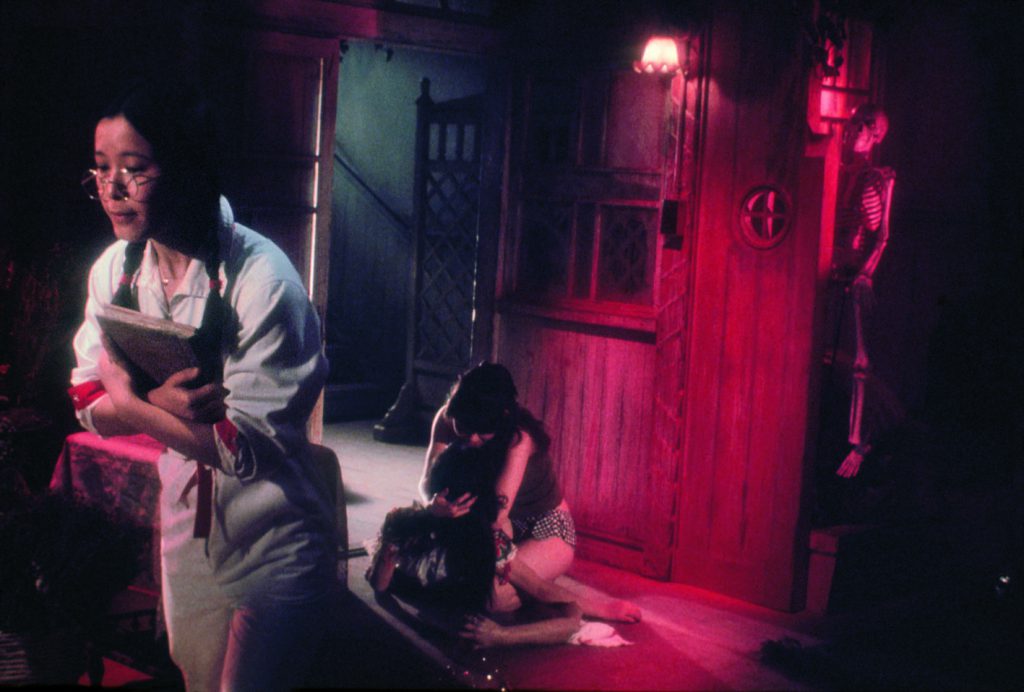
The desperation in the company office after a series of flops (ostensibly based on comprehensible scripts, natch) comes through lound and clear–and maybe it would be a better world, or at least a better cinema, if more film companies and funding bodies would venture into such uncharted territories. In any case, since no other filmmaker seemed to understand the script either, Ôbayashi was assigned directorial duties as well. This was the beginning of a successful career, with Ôbayashi shooting a film almost every year since, though his work has been mostly ignored by Western mainstream film culture (like so much pertinent stuff) despite the acclaim lavished on House since its belated rediscovery outside of Japan.
Admittedly, there was a certain amount of attention for Ôbayashi’s final films and there is some poetic justice to this, as they completed a circle. Diagnosed with terminal cancer in 2016, the filmmaker finally returned to the dream project he orignally wanted to get made in the 1970s before House “happened”: And so Hanagatami (2017), based on a 1937 novel by Dan Kazuo, about the seemingly idyllic life of a group of youths in the face of impending (world) war, emerged as moving quasi-testament four decades later, with the wisdom of age embedded in the still-unruly and constantly surprising flow of ideas that late Ôbayashi had never abandoned, only refined. He even managed to follow up on this with a second three-hour epic of exuberance and reflection, fittingly titled Labyrinth of Cinema (2019), that similarly combined Ôbayashi’s main concerns–the magic conjured by imagination and images (within stories and on their own terms), his firm anti-war stance, and his concern for youth, its utopian promises and its inevitable transience.
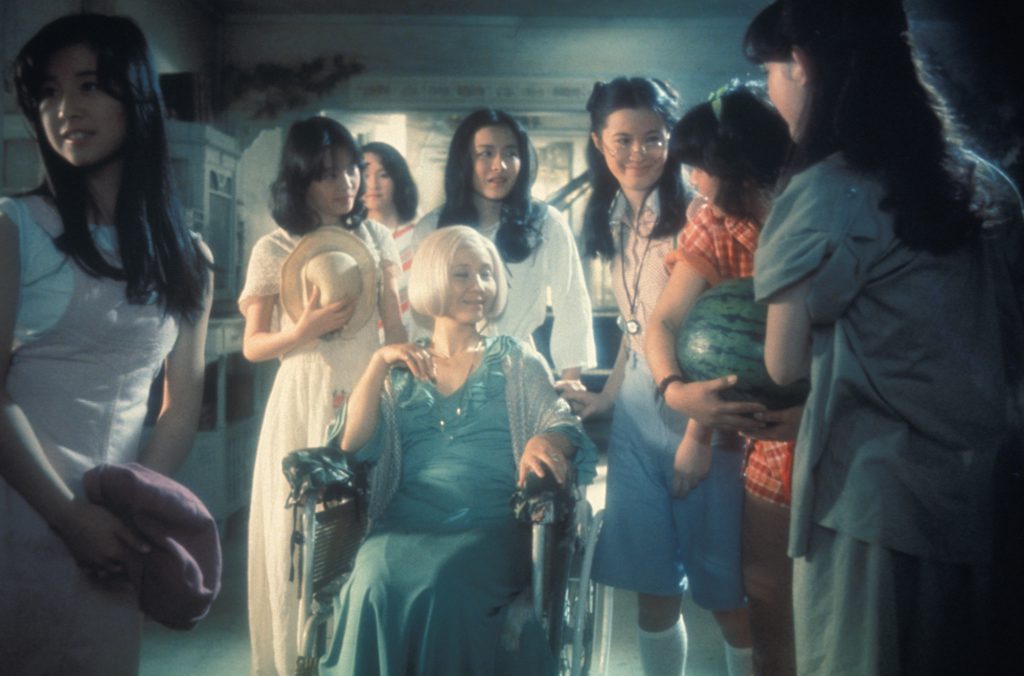
Indeed, youth emerges as the grand theme of Ôbayashi’s work, and his successes at home are linked to a truthful and popular evocation of memories and sensations (and, as the years progressed, a nostalgia connected to them for the older viewers, maybe a bit like the 1980s revival that flared through Western pop culture) touching on something specifically national, which may help to explain the different reception of Ôbayashi inside and ouside of Japan. The youthful energy is celebrated in the early experiments, when the director was young himself, then slowly recedes into a melancholy distance owing to the creator’s increasing age, while the fantastic element so prominent in his work often feels like an expression of the disruptions of dreams that come with adulthood. Clearly, there was an earlier turning point for Ôbayashi when he founded a family and had to accept new responsibilities in the sixties, but in House he still celebrated teenage turbulence–with a sting.
Ôbayashi had become a key filmmakers for the independent production company ATG, whose goal was to enable artistic projects apart from industry norms, which gives an idea of the personal nature of Ôbayashi’s projects, even as his flashy innovations and commercial background have led to claims that he’s a prime example of style-over-substance. But even studio-backed films like House or Nerawareta gakuen (School in the Crosshairs aka The Aimed School, 1981), a no less wacky mix of high-school-movie, outlandish science fiction and political parable, or Toki o Kakeru Shōjo (The Girl Who Leapt Through Time, 1983), a subject somewhat better known in the West through equally succesful remakes, prove that his wild delirium is not just an end in itself–for all its outrageous rollercoaster sensibility, his pop art betrays feelings of deep ambivalence: high-speed surface spectacles rushing through a universe chock-full with shiny products, but everything and everybody is also removed from its/his/her roots. In a way, House is the portrait of a (too) brave new world that eats its children.
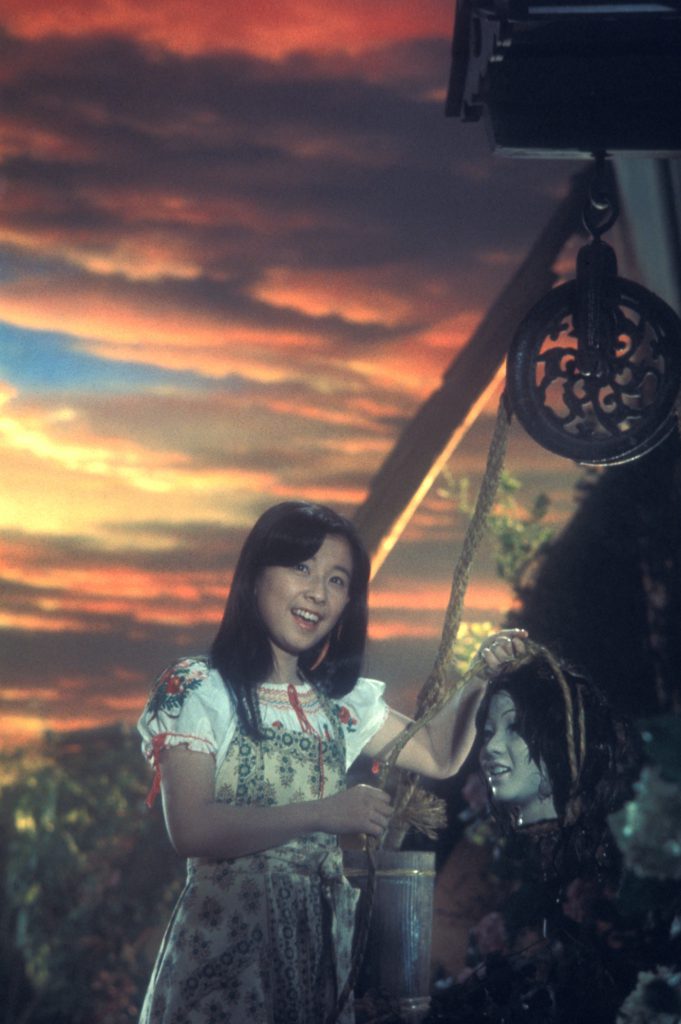
Ôbaysahi was known to be fond of horror films – Emotion (1966), one of his best-known earlier avantgarde works, is a tribute to Roger Vadim’s vampire film Et mourir de plaisir (Blood of Roses, 1961), with Ôbayashi himself playing the vampire – , but he has stated that he does not see House as a horror movie, calling it an “expression of the atomic bomb for children”, even a revision of Japanese history since World War II in childish images (from that persepctive, the script collaboration with his daughter makes sense immediately). With its colorful visuals, associative-at-best storyline and catchy rock music cues House has been compared to the stunning surrealism of Dario Argento’s Suspiria, although its free-for-all madness and fondness for cheap, yet effective experiments have more to do with the stylistically innovative, comic hell ride of Sam Raimi’s later The Evil Dead films. But comparisons don’t get you too far with Ôbayashi – his work is all about exploding boundaries (the last time we screened our print of House in the Film Museum was in the second part of our huge horror series, but it is equally apposite for our current retospective of Comedy Against Crisis). Which makes sense in the context of a career that has moved freely between avantgarde art, production of commercials and commercial film production.
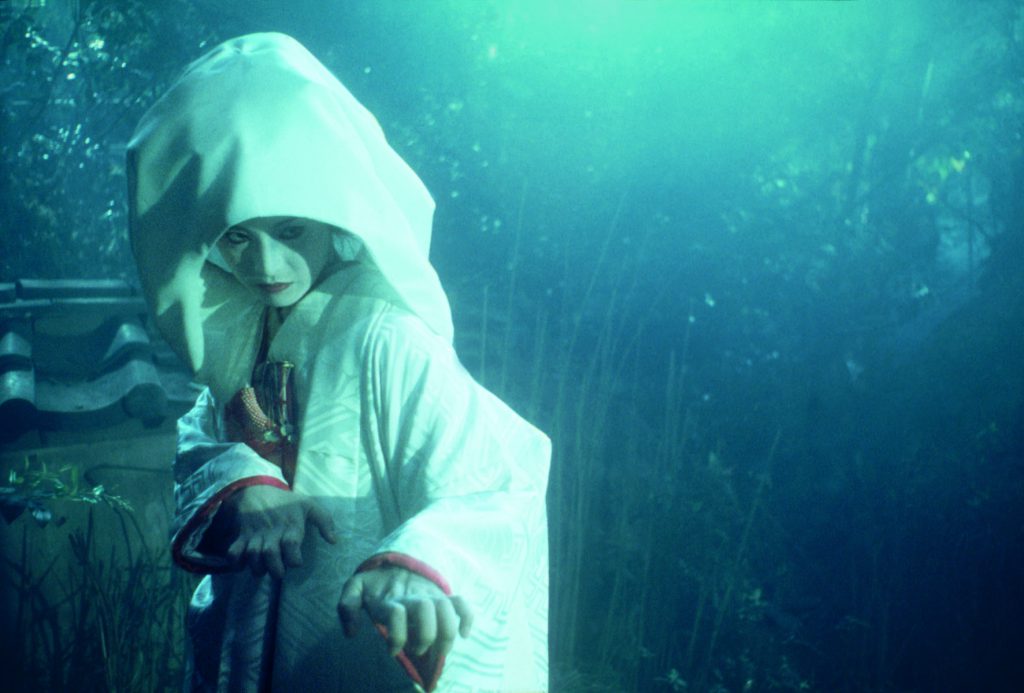
House, building on a barrage of effects tried by its director in art and advertising, is the perfect demonstration of this demented trifecta à la Ôbayashi, its extreme artifice giving way to a personal vision, notable for instance in characterstic details. I will not even try to unravel the mystery of mighty banana man and other out-there-subplots (too numerous to mention), but let me point out that Ôbayashi also plays piano, a music instrument that reappears in most of his films. For obvious reasons, however, none of those appearances is as memorable as the one in House.
